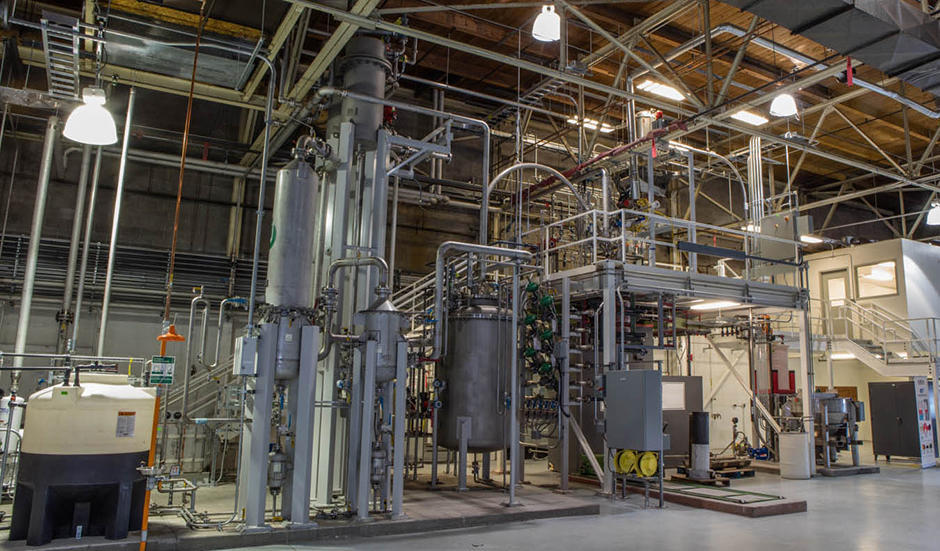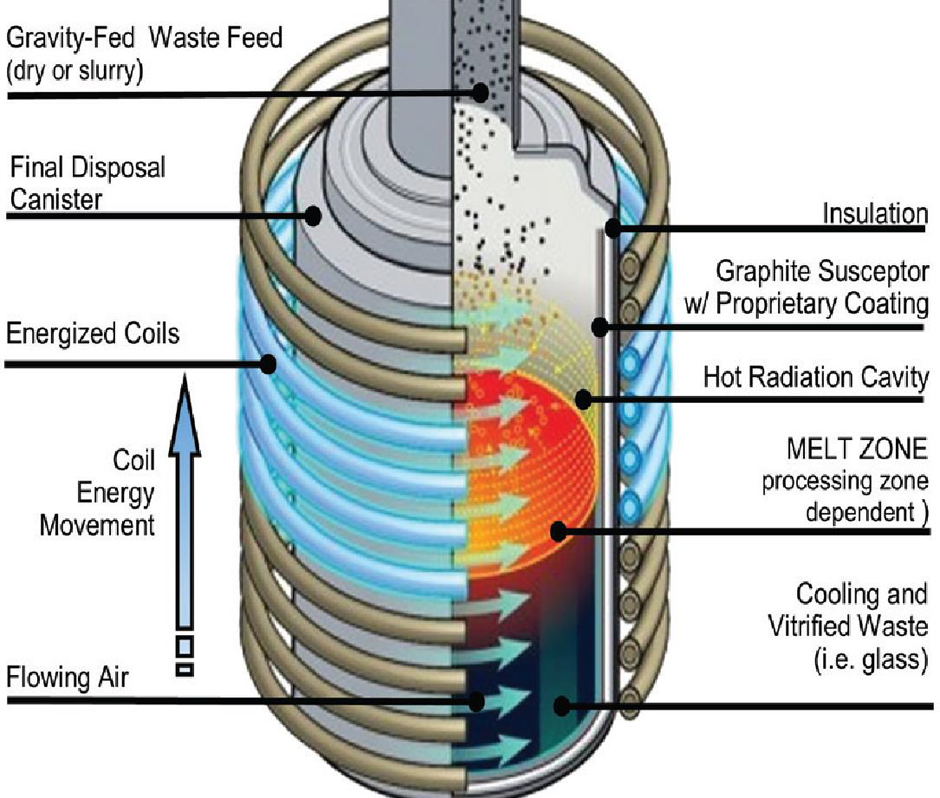
Sample of vitrified waste
Our Innovative Modular Vitrification System (MVS®) converts environmental hazards into glass, the safest, and now increasingly cost-effective material for waste disposal.
Reimagining The Route To Glass
Experts believe that glass is the most stable form to store nuclear and hazardous waste. Yet legacy technologies have prevented its adoption as a wide-scale waste storage solution because of its prohibitive costs. Despite its effectiveness, and because of its high costs, glass has only been used for some of the most dangerous waste where absolute long-term safety is required.
Veolia Nuclear Solutions is changing this paradigm. The company is developing a Modular Vitrification System (MVS®) to make glass a cost-effective, practical option for even low-level nuclear waste, delivering the highest environmental protection.
A Simple and Cost-Effective Solution – Modular Vitrification System (MVS®)

MVS® produces leach-resistant, high-quality glass at our demonstration facility in Richland, Wash., in the United States. It is dramatically less expensive and far easier to deploy than existing alternatives.
With conventional technologies, waste flows through giant melters that heat it into molten glass, which is then poured into canisters for cooling and final disposal. With our system, we make the disposal canister in the factory itself, eliminating expensive facilities and the associated maintenance costs and failure risks.
While traditional vitrification technologies produce glasses continuously, our system treats waste batch-by-batch, providing tremendous flexibility that dramatically lowers the total life-cycle cost for waste treatment, including:
The ability to customize the glass formulation and melting temperatures for specific waste streams
Reduction of size of pretreatment and off-gas systems
The increase of waste loading capacity
A significant reduction of maintenance costs
How it works

The Modular Vitrification System is based on a fundamental physics principle – Fleming’s Law. Electrical current flows in the coils surrounding the canister to create a magnetic field, which then causes a current within the graphite metal located inside the canister. This current creates induction heat that melts the glass formers and waste into glass.
A single-cycle hot-wall inductively heated in-container system where the heating range from ambient to 2000°C, provides only in-class flexibility to melt below volatizing temperature of many isotopes or at very high temps for high waste loading.


